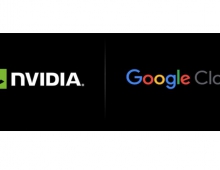
Google's Android Serves the Latest Smartphone Trends
Android is powering many of the latest and exciting trends that push what mobile is capable of.
Google is working with a broad and open ecosystem of partners to push the boundaries of hardware and software, bringing new experiences and capabilities to mobile devices and igniting the consumers' interest in mobile technologie sand smartphones.
This week's MWC in Barcelona is mostly about new flagship devices, some of them featuring foldable screens, and also new strategies for 5G.
Google has been evolving Android to support its partners in building devices in a variety of shapes and sizes. Last fall, the company announced that Android would power the emerging category of phones with screens that can bend and fold. Along with this trend comes new smartphone capabilities—for example, multitasking on a phone can become even easier; with more available, expanding screen area, users can watch a video on one side and take notes on the other. Tablets can be more portable, folding to easily fit into pockets or purses.
This week, the world’s first foldable screen devices are launching on Android, with Samsung’s Galaxy Fold announced at Galaxy UNPACKED, and Huawei’s Mate X which was announced on Sumday at MWC Barcelona. More Android-powered foldable devices are also coming from other manufacturers, and Google says that it will bring further improvements to the operating system for a smooth experience on these phones.
As the industry progresses towards faster and better connectivity with new devices and chipsets, 5G will accelerate the potential of richer entertainment and communication experiences. At MWC, Samsung, Xiaomi, LG, Huawei, Qualcomm, Sony, HTC, OnePlus and Vivo are revealing their plans for 5G, including new devices launching later this year. excited Android is enabling the world’s first 5G smartphones, helping accelerate its adoption in 2019 and beyond.
To improve the standard messaging experience on Android, Google has been working with partners including Samsung, Huawei, America Movil, Deutsche Telekom, Orange, Telefonica, Telenor, and Vodafone to make RCS (Rich Communication Services) more widely available. Google has helped to launch RCS in 24 countries, bringing enhanced features in users' conversations like group chats, read receipts, and high quality media sharing. Google promises to continue to work to bring better messaging to every Android user, across a broad range of devices and carriers.
On the security front, Google has been working with its partners to offer reliable smartphone experiences on Android. The Android One program represents a collaboration with manufacturers to bring devices that deliver its key attributes: faster access to the latest version of Android, regular security updates and a software design that’s intuitive and streamlined. Google says that thanks to Xiaomi, LG, Motorola and HMD Global, Android One activations grew 250 percent year over year. With the addition of the upcoming Nokia 9 PureView, Nokia 3.2, Nokia 4.2 and more, Android One will continue to bring people a consistent smartphone experience that’s secure.
To help businesses discover the best devices and services Android has to offer, the Android Enterprise Recommended program has validated more than 80 devices that meet elevated enterprise requirements for hardware, software and security updates. Just a few days ago, Google expanded the program to include Managed Service Providers, who are mobility experts equipped to help customers build and support their Android enterprise deployments.
Android (Go edition), an optimized version of Android tailored for smartphones with 1GB of RAM or less, has helped bring the power of computing to more consumers worldwide. The most recent Android 9 Pie (Go edition) release is powering the new Nokia 1 Plus and the BLU Vivo Go. Today, over 50 percent of entry-level Android devices are now activating with Go.
Google has also brought more AI capabilities to the mobile ecosystem. Last year, the company took the first step in working with LG to launch a dedicated button for the Google Assistant on its flagship devices to help people get things done on the go.
This year, Google is bringing the Google Assistant button to the full portfolio of new Android devices with LG and Nokia, including the LG G8 ThinQ and K40 and the Nokia 3.2 and 4.2. New phones from Xiaomi (including the Mi MIX 3 5G and Mi 9), TCL and Vivo (including the V15 Pro) will also launch with the Google Assistant button later this year. With these partnerships, Google expects over 100 million devices to launch with a dedicated Google Assistant button.
And to support future AI-driven mobile experiences, Google worked with manufacturers like Qualcomm and Mediatek to bring support for Android’s Neural Networks API and ML Kit. This integration lets phone manufacturers and app developers build smarter and smoother experiences on mobile. For example, LG adopted these technologies to bring Google Lens suggestions into the camera app on the LG G8 ThinQ, allowing people to simply point the camera, and with a single tap, call or save a phone number on a takeout menu, send an email right from a flyer, or open an address in Google Maps.
Last summer, Android 9 introduced a set of new tools to help users achieve the balance with technology they might be looking for. Today, Digital Wellbeing is expanding to more phones beyond Pixel and Android One, starting with the new Moto G7 family. Google is working to bring these features to even more phones.
Every year at MWC Barcelona, Google offers the Android Partner Walk, where attendees have the chance to collect character pins from Google's partners across the show floor. This year Google is bringing those characters to life with augmented reality. If you’re at the show, you can see and collect 3D pins using the Android Partner Walk app. This app is powered by ARCore, Google’s platform for AR experiences.




















